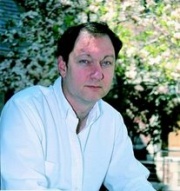More Guns, Less Crime

Lott also examines the effects of gun control laws, including the Brady Law.
Contents |
[edit] Main topics
Below are summaries of the main topics discussed in More Guns, Less Crime.
[edit] Shall issue laws
Lott examines the effects of shall issue laws on violent crime across the United States.
His conclusion is that shall issue laws, which allow citizens to carry concealed weapons, steadily decrease violent crime. He explains that this result makes sense because criminals are deterred by the risk of attacking an armed victim. As more citizens arm themselves, the danger to criminals increases. A no-brainer if ever there was one.
[edit] Training requirements
Lott examines the effects of training requirements on crime rate and accident rate. He finds that training requirements have very little effect on both crime rates and accident rates.
[edit] Waiting periods
Lott examines the effects of waiting periods. These include limiting the time before purchasing a gun, and limiting the time before obtaining a concealed carry permit.
[edit] Brady Law
Lott examines the effects of the Brady law.
[edit] Other countries
Lott spends some time discussing gun ownership rates and crime rates in other countries, such as the United Kingdom.
[edit] Controversy
[edit] Support
Academics and their work that have used Lott's work are:
- Eric Helland, Claremont-McKenna College and Alexander Tabarrok, George Mason University, "Using Placebo Laws to Test 'More Guns, Less Crime'," The B.E. Journal of Economic Analysis & Policy,[1]
- BRUCE L. BENSON, Florida State University, and BRENT D. MAST, American Enterprise Institute, Privately Produced General Deterrence," Journal of Law and Economics,[2]
- DAVID E. OLSON Loyola University Chicago and MICHAEL D. MALTZ University of Illinois at Chicago, "RIGHT-TO-CARRY CONCEALED WEAPON LAWS AND HOMICIDE IN LARGE U.S. COUNTIES: THE EFFECT ON WEAPON TYPES, VICTIM CHARACTERISTICS, AND VICTIM-OFFENDER RELATIONSHIPS," Journal of Law and Economics,[3]
- FLORENZ PLASSMANN State University of New York at Binghamton and T. NICOLAUS TIDEMAN Virginia Polytechnic Institute and State University, "DOES THE RIGHT TO CARRY CONCEALED HANDGUNS DETER COUNTABLE CRIMES? ONLY A COUNT ANALYSIS CAN SAY," Journal of Law and Economics,[4]
- William Alan Bartley and Mark A. Cohen Vanderbilt University, The Effect of Concealed Weapons Laws: An Extreme Bound Analysis, Economic Inquiry,[5]
- CARLISLE E. MOODY College of William and Mary, "TESTING FOR THE EFFECTS OF CONCEALED WEAPONS LAWS: SPECIFICATION ERRORS AND ROBUSTNESS," Journal of Law and Economics,[6]
- FLORENZ PLASSMANN State University of New York at Binghamton and John Whitley University of Adelaide, Confirming More Guns, Less Crime, Stanford Law Review.[7] All but the last paper are in refereed economics journals.
The book The Samurai, the Mountie, and the Cowboy: Should America Adopt the Gun Controls of Other Democracies, which examines the gun control policies of many nations around the world and supports the ideas presented in Lott's work.
[edit] Opposition
A study by Ayres and Donohue of Stanford Law School stated that Lott's conclusions were incorrect. [8]
A review of his book More Guns, Less Crime: Understanding Crime and Gun-Control Laws in the New England Journal of Medicine states:
- [Lott] finds, for example, that both increasing the rate of unemployment and reducing income reduces the rate of violent crimes and that reducing the number of black women 40 years old or older (who are rarely either perpetrators or victims of murder) substantially reduces murder rates. Indeed, according to Lott's results, getting rid of older black women will lead to a more dramatic reduction in homicide rates than increasing arrest rates or enacting shall-issue laws
Rutgers sociology professor Ted Goertzel stated that "Lott’s massive data set was simply unsuitable for his task", and that he "compar[ed] trends in Idaho and West Virginia and Mississippi with trends in Washington, D.C. and New York City" without proper statistical controls. He alleged that econometric methods are susceptible to misuse and can even become junk science. [9]
[edit] ISBN
[edit] References
- ↑ Using Placebo Laws to test "More Guns, Less Crime" Eric Helland; Alexander Tabarrok 2004-01-10 Berkeley Electronic Press
- ↑ [1]
- ↑ http://www.journals.uchicago.edu/JLE/journal/issues/v44nS2/012206/brief/012206.abstract.html
- ↑ http://www.journals.uchicago.edu/JLE/journal/issues/v44nS2/012201/brief/012201.abstract.html
- ↑ EconPapers: The Effect of Concealed Weapons Laws: An Extreme Bound Analysis
- ↑ http://www.journals.uchicago.edu/JLE/journal/issues/v44nS2/012203/brief/012203.abstract.html
- ↑ Microsoft Word - Plassmann.doc
- ↑ Microsoft Word - Ayres article.doc
- ↑ Econometric Modeling as Junk Science
[edit] See also
- The Bias Against Guns - A related book by John Lott, suggesting that psychological bias prevents some from accepting the results of his study.
- Gun Politics
- Carrying concealed weapons
[edit] External links
- http://www.johnlott.org/ - John Lott's website, with instructions for obtaining the raw data used in his studies.
- http://islandia.law.yale.edu/ayers/Ayres_Donohue_article.pdf - Ayres and Donohue's analysis of Lott's work
- http://papers.ssrn.com/sol3/papers.cfm?abstract_id=372361 - Lott's response to the Ayres and Donohue article
- http://teapot.usask.ca/cdn-firearms/Lott/lott.pdf - A paper relating to the work in this book.
- http://www.time.com/time/community/transcripts/chattr070198.html - A debate transcript where Lott defends his work.
- "More Guns Less Crime" at archive.org (includes downloadable versions)